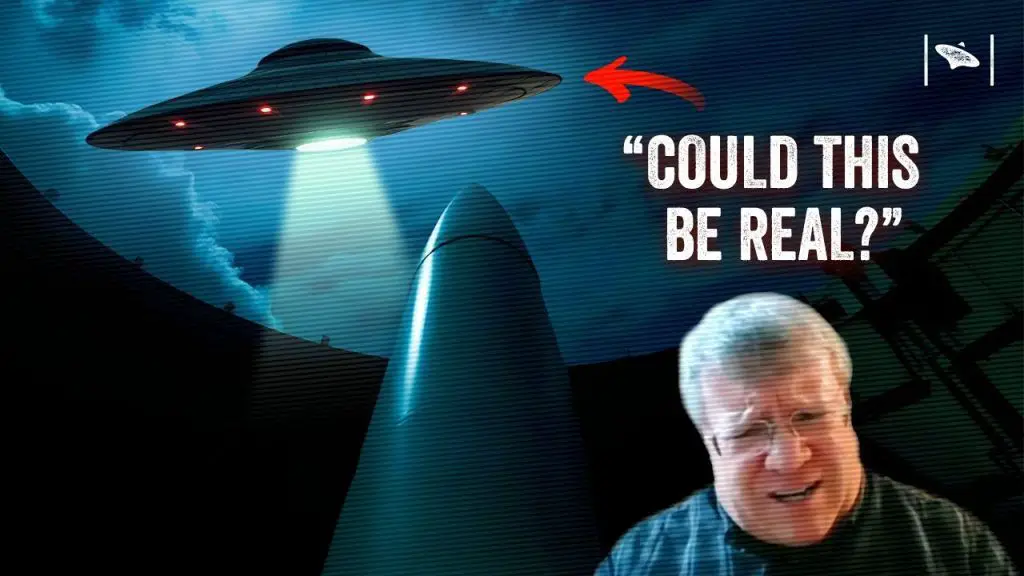
Dr. Kevin Knuth, a former NASA research scientist and a respected physicist, was initially a curious observer rather than an active researcher in the field of Unidentified Aerial Phenomena (UAPs). His journey into serious UAP research began in 2010 after attending a press conference that fundamentally altered his views on the subject. This event, organized by Robert Hastings at the National Press Club in Washington, D.C., featured retired U.S. military officers who provided compelling testimonies about their encounters with UAPs at nuclear weapons sites. This marked a significant turning point in Dr. Knuth’s career, transforming him from a bystander to a committed investigator of these phenomena.
The Press Conference That Changed Everything
The 2010 press conference hosted by Robert Hastings was not just another event in the UFO community—it was a game-changer. Hastings, a well-known figure in UAP research, brought together seven former U.S. Air Force officers to share their experiences with UAPs. These officers provided detailed accounts of UAP incidents at various nuclear weapons facilities, including missile sites and storage areas.
One of the most striking aspects of the conference was the consistency of the testimonies. The witnesses described UAPs as disc-shaped, cylindrical, or spherical objects capable of hovering silently or moving at high velocities. What made these sightings particularly alarming was the apparent ability of these UAPs to interfere with nuclear weapons, rendering them inoperative. This connection between UAPs and nuclear facilities has been a recurring theme in UAP research, raising concerns about the potential implications for national security.
Dr. Knuth’s Initial Skepticism
Dr. Knuth’s interest in UAPs dates back to 1988 when he was a graduate student. He recalled a conversation with one of his professors, who mentioned strange incidents involving UAPs at Malmstrom Air Force Base in Montana. According to the professor, UAPs were reportedly disabling intercontinental ballistic missiles (ICBMs) at the base. At the time, Dr. Knuth and his peers dismissed the story as implausible, finding it difficult to believe that such a significant event could occur without widespread attention.
For years, this story remained a humorous anecdote in Dr. Knuth’s mind, something he and his fellow students would joke about. However, it wasn’t until 2010 that he encountered similar accounts, which made him reconsider the validity of his professor’s story.
The Pivotal Moment
In 2010, while preparing lectures on astrobiology at the University at Albany, Dr. Knuth stumbled upon the press conference organized by Robert Hastings. During the conference, he heard testimonies from several military officers, including Robert Salas, who had witnessed UAPs at Malmstrom Air Force Base—the very location his professor had mentioned years earlier.
VIDEO: Chris Lehto – The UFO Event That Shocked Dr. Knuth.
One of the most impactful testimonies came from Robert Salas, a retired U.S. Air Force captain. Salas described an incident at Malmstrom Air Force Base in 1967, where a bright red UAP was seen hovering above the front gate of the facility. Shortly afterward, ten nuclear missiles went offline, becoming inoperable. This account, corroborated by other military personnel, struck a chord with Dr. Knuth, as it matched the story he had heard decades earlier.
Realizing the credibility of these witnesses and the potential implications of their testimonies, Dr. Knuth’s perspective on UAPs shifted dramatically. He began to take the issue seriously, recognizing the need for scientific investigation into these phenomena.
The Broader Implications
The 2010 press conference highlighted a pattern of UAP encounters at nuclear facilities, with multiple witnesses providing corroborating accounts. Among the speakers were military officers such as Colonel Charles Halt, who had witnessed UAPs at RAF Bentwaters in England, and Lieutenant Robert Jacobs, who described a UAP encounter during a missile test in 1964.
These testimonies suggested that UAPs have a specific interest in nuclear weapons, raising questions about their intentions and the potential risks they pose. For Dr. Knuth, the realization that credible military personnel were reporting these incidents—and that they were being largely ignored by the public and the scientific community—was alarming. He saw the lack of attention to these events as dangerous and felt compelled to take action.
Dr. Knuth’s New Mission
Motivated by the testimonies he had heard, Dr. Knuth decided to shift his focus to UAP research. As a physicist with expertise in astrophysics, machine learning, and the foundations of physics, he recognized the need for a scientific approach to studying UAPs. He became an advocate for serious research into these phenomena, calling for greater transparency and investigation.
Dr. Knuth’s journey from skepticism to advocacy underscores the importance of credible witness testimonies in shaping our understanding of UAPs. His experience highlights the need for the scientific community to engage with this issue and for the public to recognize the potential significance of UAP encounters, particularly those involving nuclear weapons.
In conclusion, the 2010 press conference that shocked Dr. Kevin Knuth serves as a powerful reminder of the potential implications of UAPs. It not only transformed his career but also contributed to a growing movement calling for greater scrutiny and research into these mysterious phenomena. As more information comes to light, Dr. Knuth’s story may inspire others in the scientific community to take UAPs seriously and to explore the mysteries that still surround them.

Leave a Reply